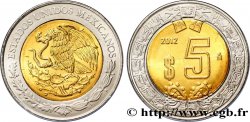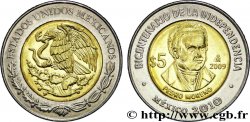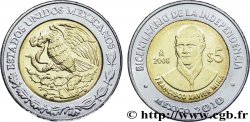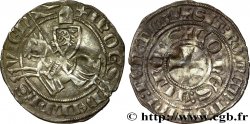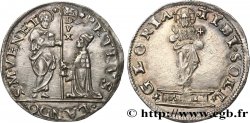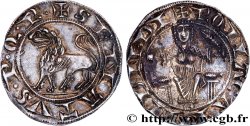Live auction - fwo_396781 - MEXICO 20 Pesos or “Pierre du Soleil” (calendrier aztèque) 1921 Mexico
You must signin and be an approved bidder to bid, LOGIN TO BID. Accounts are subject to approval and the approval process takes place within 48 hours. Do not wait until the day a sale closes to register. Clicking on "BID" constitutes acceptance of the terms of use of cgb.fr private live auctions.
Bids must be placed in whole Euro amounts only. The sale will start closing at the time stated on the item description; any bids received at the site after the closing time will not be executed. Transmission times may vary and bids could be rejected if you wait until the last second. For further information check the Live auction FAQ
All winning bids are subject to a 18% buyer’s fee.
All winning bids are subject to a 18% buyer’s fee.
| Estimate : | 750 € |
| Price : | 611 € |
| Maximum bid : | 765 € |
| End of the sale : | 26 July 2016 16:11:16 |
| bidders : | 4 bidders |
Type : 20 Pesos or “Pierre du Soleil” (calendrier aztèque)
Date: 1921
Mint name / Town : Mexico
Quantity minted : 922000
Metal : gold
Millesimal fineness : 900 ‰
Diameter : 27,2 mm
Orientation dies : 6 h.
Weight : 16,68 g.
Edge : inscrite en creux
Rarity : R1
Coments on the condition:
Coup sur la tranche à 4 heures au revers
Catalogue references :
Obverse
Obverse legend : ESTADOS UNIDOS MEXICANOS / 1921.
Obverse description : Aigle debout à gauche sur un cactus, lui-même poussant sur une pierre, et terrassant un serpent au-dessus d’un lac bordé par deux branches composites ; dans le champ le millésime.
Obverse translation : (États-Unis du Mexique).
Reverse
Reverse legend : VEINTE PESOS/ *15 GR. ORO PURO*.
Reverse description : Pierre du soleil ou “Calendrier aztèque”.
Reverse translation : (Vingt pesos/ 15 grammes d'or pur).
Commentary
Cet exemplaire est la frappe d’origine et est difficile à trouver. La “Pierre du Soleil” est un disque monolithique de 3,60 m de diamètre et 1,22 m d’épaisseur et pesant 24 tonnes. Découverte par hasard en 1790 à Mexico lors du pavage d’une place, cette pierre serait un autel sacrificiel sculpté sous le règne de l’empereur aztèque Axayácatl. Elle est conservée au Musée National d’anthropologie de Mexico.







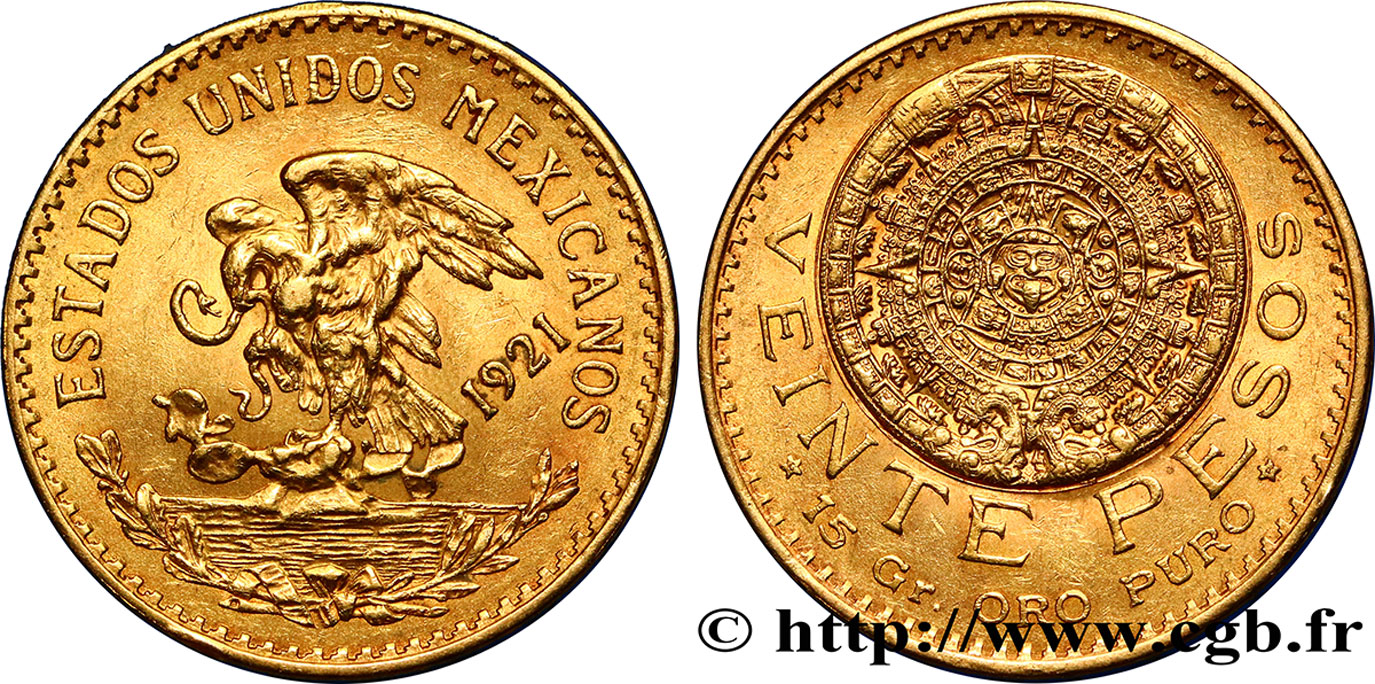
 Report a mistake
Report a mistake Print the page
Print the page Share my selection
Share my selection Ask a question
Ask a question Consign / sell
Consign / sell
 Full data
Full data
